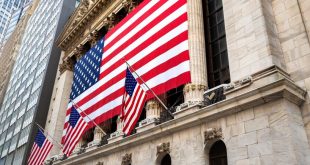U.S. stock futures edged higher on Wednesday as traders evaluated the ongoing Israel-Iran conflict and braced for the conclusion of the Federal Reserve’s policy meeting later in the day.
At 05:20 ET (09:20 GMT), Dow Jones Futures gained 100 points, or 0.2%, S&P 500 Futures rose 20 points, or 0.3%, and Nasdaq 100 Futures climbed 102 points, or 0.5%.
The main Wall Street averages ended lower on Tuesday, erasing earlier gains. The S&P 500 dropped 0.8%, the tech-heavy NASDAQ Composite fell 0.9%, and the Dow Jones Industrial Average lost 0.7%, driven by the ongoing Israel-Iran conflict and weak retail sales data.
Fed Meeting in Focus
The Federal Reserve’s two-day policy meeting, which is set to conclude on Wednesday, is in the spotlight as investors seek insights into the central bank’s plans for interest rates. Economists widely expect the Fed to maintain rates in the 4.25%-4.50% range, with policymakers focusing on the economic impact of President Trump’s tariff policies on inflation and growth.
The Fed is expected to take a cautious, wait-and-see approach to any future rate cuts. In particular, the central bank’s updated “dot plot,” which reflects officials’ projections for future rate hikes or cuts, will be closely watched.
Markets currently price in a slightly greater than even chance that the next Fed rate cut will not occur until September, according to CME Group’s FedWatch Tool.
Key Economic Data
In addition to the Fed’s decision, investors are also awaiting economic data, including May’s housing starts and preliminary building permits, which will provide insights into the U.S. housing market. Weekly jobless claims data will also be released, offering a glimpse into the state of the labor market.
U.S. Potential Involvement in Israel-Iran Conflict
The ongoing Israel-Iran conflict remains a key concern for investors. Reports surfaced that President Trump is weighing various options, including a potential U.S. military strike against Iran. After meeting with top advisers at the White House on Tuesday, Trump is reportedly considering further military actions.
Trump’s remarks, demanding Iran’s “unconditional surrender,” and a statement claiming the U.S. has “complete and total control” over Iranian airspace, have raised concerns about U.S. involvement. A Reuters report also indicated that the U.S. military is deploying additional fighter aircraft to the region.
While the Pentagon has called the U.S. military buildup defensive, these developments have heightened market unease, fueling concerns that the U.S. could become more directly involved in the conflict.
Banking Sector Under Scrutiny
In corporate news, the banking sector will be in focus on Wednesday after Bloomberg reported that U.S. regulators are considering a reduction in the capital buffer for the nation’s largest banks. The Federal Reserve, Federal Deposit Insurance Corp (FDIC), and the Office of the Comptroller of the Currency (OCC) plan to lower the enhanced supplementary leverage ratio (ESLR) for major U.S. banks, including JPMorgan Chase, Goldman Sachs, and Morgan Stanley.
The ESLR is a key capital requirement for systemically important U.S. banks, ensuring they hold enough capital to withstand financial risks. A reduction in the ratio could have significant implications for the banking sector, especially in terms of banks’ ability to trade U.S. Treasurys.
U.S. stock futures are cautiously higher as markets await the conclusion of the Federal Reserve’s meeting and assess the potential impact of the Israel-Iran conflict. Investors are focusing on the Fed’s interest rate decision and any signals regarding future rate cuts, while also monitoring the escalating geopolitical situation and the potential for U.S. involvement. The banking sector remains under scrutiny following news of potential regulatory changes that could affect capital buffers for major lenders.
 Noor Trends News, Technical Analysis, Educational Tools and Recommendations
Noor Trends News, Technical Analysis, Educational Tools and Recommendations





